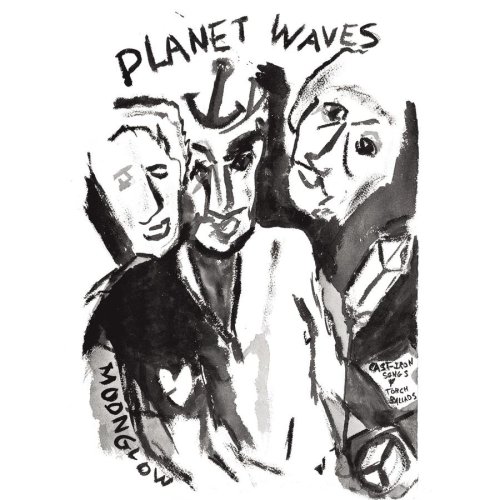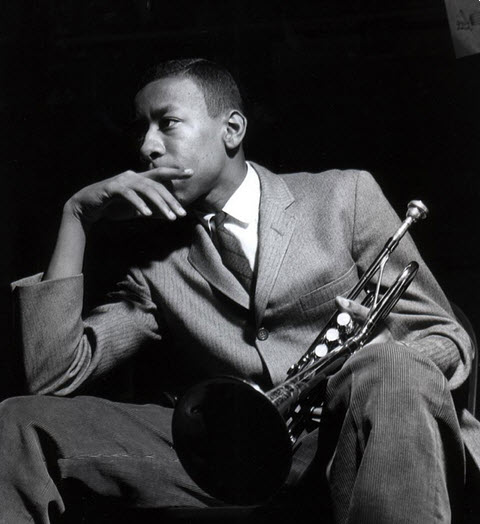Happy 75th birthday Mavis Staples (read more)
|
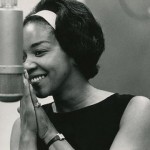 |
Edward Lee Morgan (July 10, 1938, Philadelphia, Pennsylvania – February 19, 1972, New York City) was an American hard bop trumpeter.
|
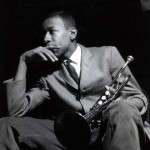 |
| Ferdinand Joseph LaMothe (October 20, 1885 – July 10, 1941), known professionally as Jelly Roll Morton was an American ragtime and early jazz pianist, bandleader and composer.Widely recognized as a pivotal figure in early jazz, Morton is perhaps most notable as jazz’s first arranger, proving that a genre rooted in improvisation could retain its essential spirit and characteristics when notated. His composition “Jelly Roll Blues” was the first published jazz composition, in 1915. | 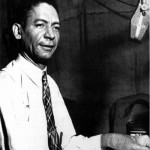 |
| John Henry Hammond II (December 15, 1910 – July 10, 1987) was an American record producer, Civil Rights activist, non-musician and music critic from the 1930s to the early 1980s. In his service as a talent scout, Hammond became one of the most influential figures in 20th century popular music. Hammond was instrumental in sparking or furthering numerous musical careers, including those of Benny Goodman, Charlie Christian, Billie Holiday, Count Basie, Teddy Wilson,Big Joe Turner, Pete Seeger, Babatunde Olatunji, Aretha Franklin, George Benson, Bob Dylan, Freddie Green, Leonard Cohen, Bruce Springsteen, Arthur Russell, Asha Puthli and Stevie Ray Vaughan. He is also largely responsible for the revival of delta blues artist Robert Johnson’s music. He also strived for racial integration, not only in the musical frontier but in the United States in general. |
 |
| A Hard Day’s Night is the third studio album by British rock group the Beatles, released on 10 July 1964, with side one containing songs from the soundtrack to their film A Hard Day’s Night. The American version of the album was released two weeks earlier, on 26 June 1964 by United Artists Records, with a different track listing. This is the first Beatles album to be recorded entirely on four-track tape, allowing for good stereo mixes. | 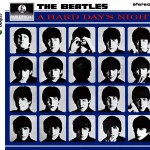 |
Spotify Playlist – July 10 |
|
Tag Archives: john hammond
Today: Bob Dylan recorded Forever Young in 1973 40 years ago
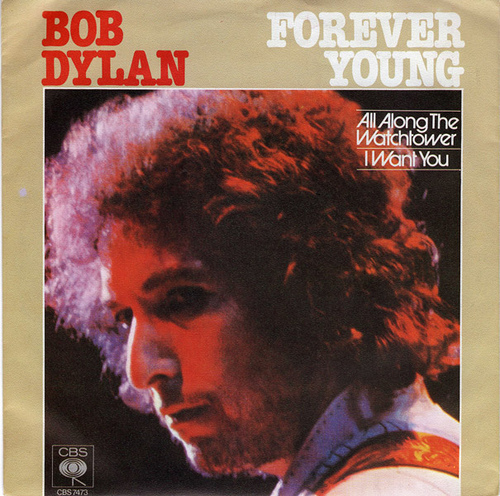 |
May God bless and keep you always May you grow up to be righteous May your hands always be busy – Forever Young by Bob Dylan |
Continue reading Today: Bob Dylan recorded Forever Young in 1973 40 years ago
Today: Bob Dylan recorded “Forever Young” in 1973 – 39 years ago
- Bob Dylan recorded master versions of “Dirge” (probably) & “Forever Young” on November 14 – 1973
- Bob Dylan recorded master versions of “Mixed-Up Confusion”, “Don’t Think Twice, It’s All Right” & “Kingsport Town” on November 14 – 1962
German single cover
May your hands always be busy
May your feet always be swift
May you have a strong foundation
When the winds of changes shift
May your heart always be joyful
And may your song always be sung
May you stay forever young
Forever young, forever young
May you stay forever young.–
“So, I don’t know. I think so. It’s all in the heart, whatever keeps you that way. Keeps you forever young. Forever young doesn’t necessarily mean that you don’t grow old, but you just have some contact with what put you where you are. You know, keep some type of contact. Anyway…”
~Bob Dylan (to Marc Rowland in Sept. 1978)“This song should be sung every morning by every child in every school in every country”
~Allen Ginsberg
From Wikipedia:
…….Though there was enough material to fill an album, Dylan decided to hold one more session. On the 14th, The Band was called back to record two songs. The first was another arrangement of “Forever Young,” this time with Helm on mandolin and Danko on fiddle. This new version of “Forever Young” would create the second of two master takes for the song, and both of them would be included on the album.
The second song recorded on the 14th was “Dirge” (or “Dirge For Martha” as it was marked on the tape box). “Bob went out and played the piano while we were mixing [the album]. All of a sudden, he came in and said, ‘I’d like to try ‘Dirge’ on the piano.’…We put up a tape and he said to Robbie, ‘Maybe you could play guitar on this.’ They did it once, Bob playing piano and singing, and Robbie playing acoustic guitar. The second time was the take.”
from Pat Garrett & Billy The Kid
–
Village Recorder
Santa Monica, California
14 November 1973
6th and last Planet Waves session
Engineer: Rob Fraboni
Songs:
- Forever Young
- Forever Young
- Forever Young
- Forever Young
- Forever Young
- Dirge
I hate myself for lovin’ you and the weakness that it showed
You were just a painted face on a trip down Suicide Road
The stage was set, the lights went out all around the old hotel
I hate myself for lovin’ you and I’m glad the curtain fell
Personnel:
- 1-5 Bob Dylan (guitar, harmonica, vocal).
- 1-3 Robbie Robertson (guitar), Rick Danko (bass), Richard Manuel (drums), Garth Hudson (organ), Levon Helm (mandolin).
- 4, 5 Robbie Robertson (mandolin), Rick Danko (fiddle), Richard Manuel (piano), Garth Hudson (organ), Levon Helm (drums).
- 6 Bob Dylan (vocal, piano), Robbie Robertson (guitar).
Today: The late Lee Morgan was born in 1938 – 74 years ago
From Wikipedia:
Edward Lee Morgan (July 10, 1938, Philadelphia, Pennsylvania – February 19, 1972, New York City) was an American hard bop trumpeter.
From Allmusic (Steve Huey):
A cornerstone of the Blue Note label roster prior to his tragic demise, Lee Morgan was one of hard bop’s greatest trumpeters, and indeed one of the finest of the ’60s. An all-around master of his instrument modeled after Clifford Brown, Morgan boasted an effortless, virtuosic technique and a full, supple, muscular tone that was just as powerful in the high register. His playing was always emotionally charged, regardless of the specific mood: cocky and exuberant on up-tempo groovers, blistering on bop-oriented technical showcases, sweet and sensitive on ballads. In his early days as a teen prodigy, Morgan was a busy soloist with a taste for long, graceful lines, and honed his personal style while serving an apprenticeship in Art Blakey‘s Jazz Messengers.
As his original compositions began to take in elements of blues and R&B, he made greater use of space and developed an infectiously funky rhythmic sense. He also found ways to mimic human vocal inflections by stuttering, slurring his articulations, and employing half-valved sound effects. Toward the end of his career, Morgan was increasingly moving into modal music and free bop, hinting at the avant-garde but remaining grounded in tradition. He had already overcome a severe drug addiction, but sadly, he would not live to continue his musical growth; he was shot to death by his common-law wife in 1972.
Bassist Bob Cranshaw played on Lee Morgan’s immortal “The Sidewinder.” Here, he remembers the session, and offers his thoughts on the great trumpeter, who died tragically at the age of 33:
Album of the day:
The Penguin Guide to Jazz selected this album as part of its suggested “Core Collection” (with a crown) calling the title track “a glorious 24-bar theme as sinuous and stinging as the beast of the title. It was both the best and worst thing that was ever to happen to Morgan before the awful events of 19 February 1972.” The album was identified by Scott Yanow in his Allmusic essay “Hard Bop” as one of the 17 Essential Hard Bop Recordings.
Other July-10:
Continue reading Today: The late Lee Morgan was born in 1938 – 74 years ago

